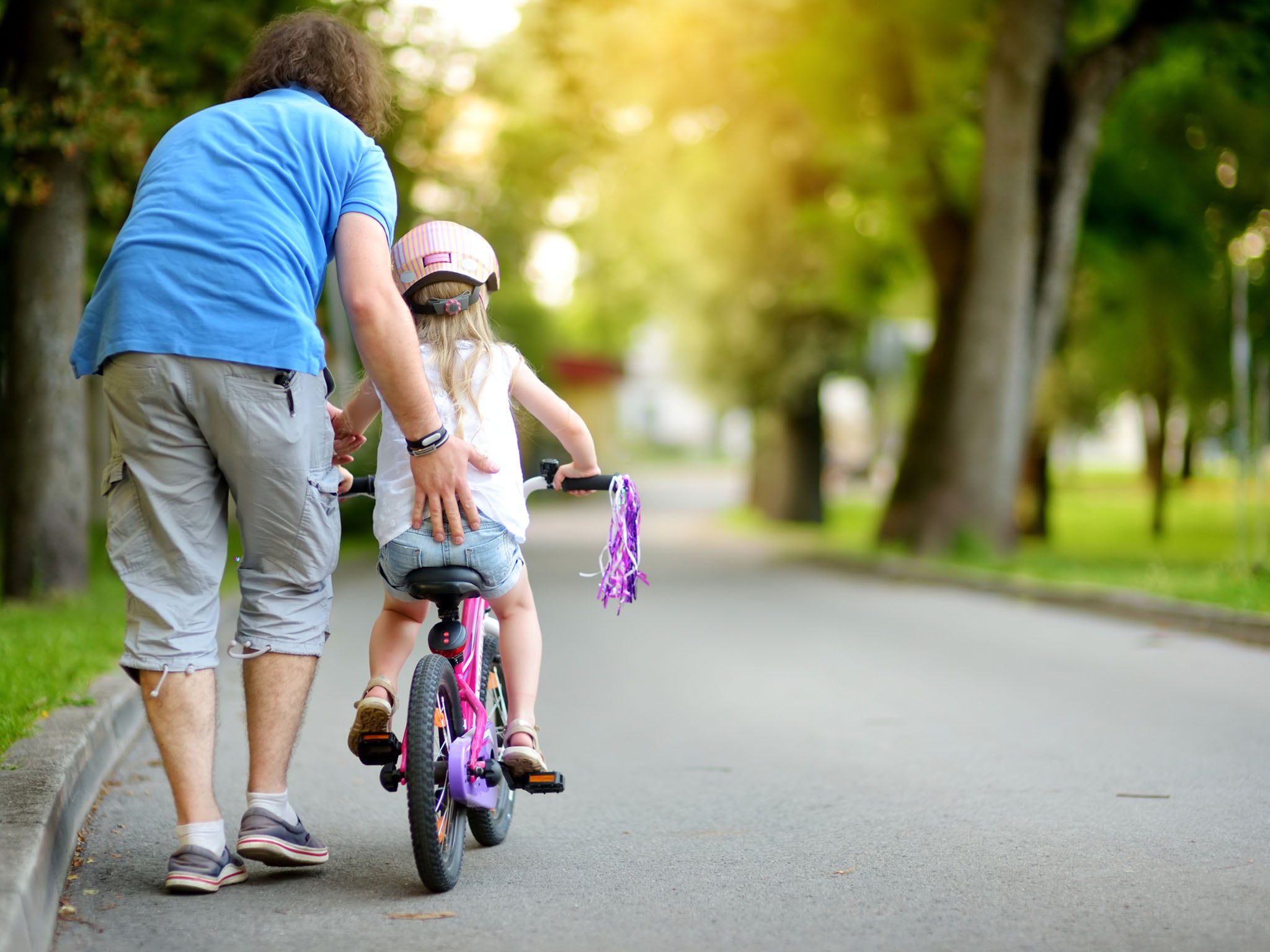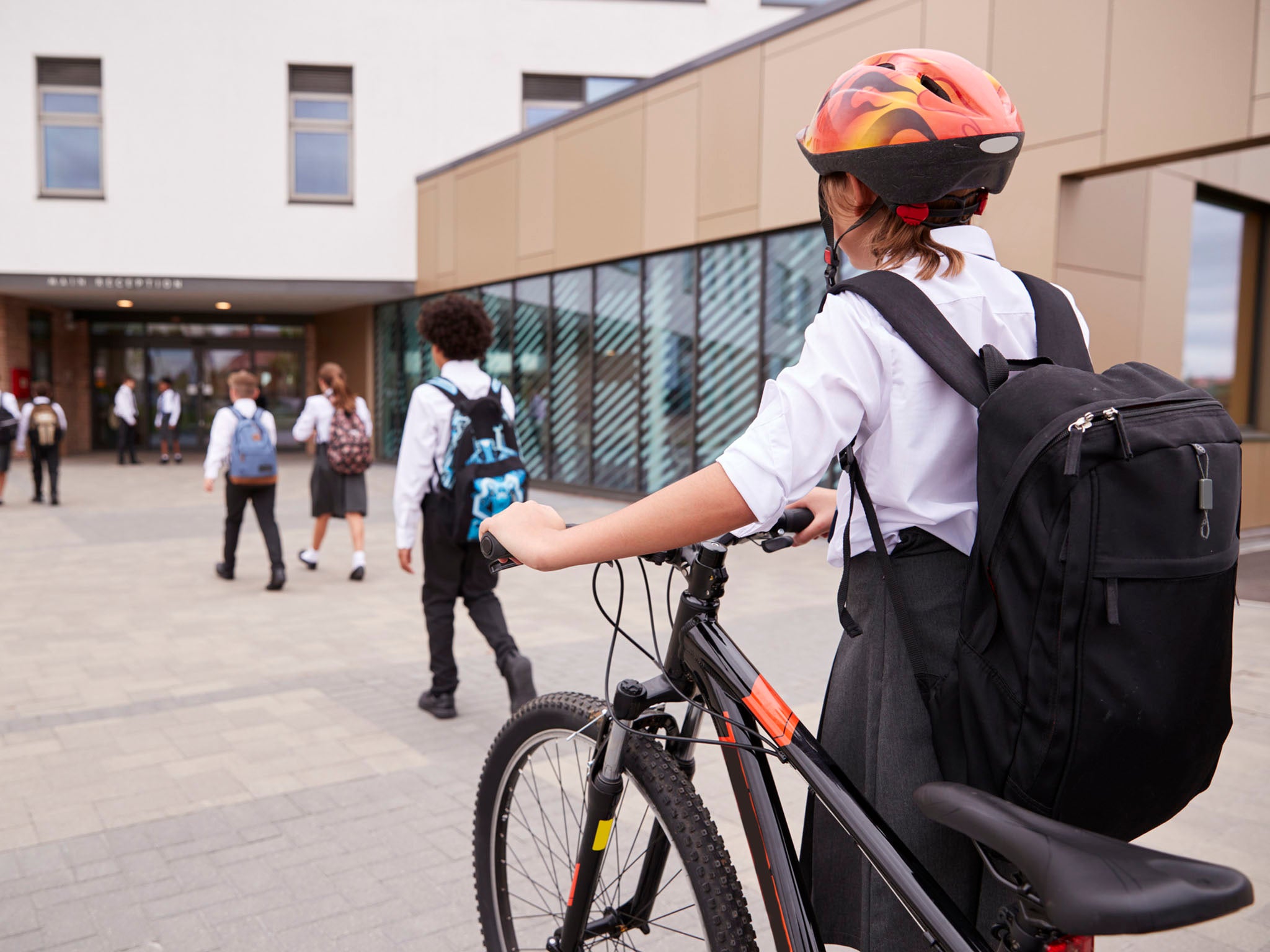Cycling to school could become mainstream – but better transport planning is desperately needed
Clogged up roads are stopping pupils improving their health and the environment, write academic experts Rachel Aldred, Anna Goodman, James Woodcock and Robin Lovelace

Your support helps us to tell the story
From reproductive rights to climate change to Big Tech, The Independent is on the ground when the story is developing. Whether it's investigating the financials of Elon Musk's pro-Trump PAC or producing our latest documentary, 'The A Word', which shines a light on the American women fighting for reproductive rights, we know how important it is to parse out the facts from the messaging.
At such a critical moment in US history, we need reporters on the ground. Your donation allows us to keep sending journalists to speak to both sides of the story.
The Independent is trusted by Americans across the entire political spectrum. And unlike many other quality news outlets, we choose not to lock Americans out of our reporting and analysis with paywalls. We believe quality journalism should be available to everyone, paid for by those who can afford it.
Your support makes all the difference.Only 2 per cent of pupils in England cycle to school – even fewer than the 3 per cent of adults who cycle to work. Similarly low rates can be found in other wealthy countries, such as the US and Australia, while some European countries have plenty of cyclists.
Hostile cycling environments, where riders are expected to mix with buses and other large vehicles, are off-putting for commuters, let alone for children (or more accurately, the adults deciding if their children can cycle). Lack of provision for cycling may also help explain the comparatively low rates in England among women, who are more likely than men to be travelling with children.
Yet planning for school cycling barely exists. Most effort across the country goes into teaching children cycling skills, via the national Bikeability programme.
While it’s important to ensure children can ride a bike, often little is done to ensure they have somewhere to ride. At school run times many neighbourhoods are clogged with traffic, with drivers parked on double yellow lines and zigzags. Some even drive on the pavement in the rush to drop off children.
There hasn’t been much incentive for this to change. Transport planning has generally marginalised cycling, with planning tools and models focused on private motorised traffic. More broadly, commuters and those making utility trips are prioritised over children’s mobility, independence, and wellbeing. These two factors mean that children’s cycling has not reached the mainstream transport planning agenda.
Cycling potential
Leadership and funding are crucial in changing the situation. But data and planning tools also matter – part of the problem is that we don’t know how many children might cycle to school. We don’t know which neighbourhoods could have a lot of children cycling, nor which routes have the greatest potential.
Making that potential visible is the challenge – which we’ve met through a new modelling tool, part of the state-funded Propensity to Cycle Tool (PCT). The analysis is based on the National School Census for which data on travelling to school was last collected in 2011 for all state primary and secondary schools in England.
The analysis shows that if children in England cycled to school as much as Dutch children do (for trips of the same distance and hilliness), more than two in five children would be making the journey by bike. The model uses data from the Dutch travel survey, which shows that while around a third of Dutch primary school children might cycle 2-3km to school, these rates drop to one in nine when the distance rises to 4km. Realising the Dutch potential would mean a 22-fold increase from the current levels of one in 50 children cycling to school.
Even today’s best performing areas would see growth. For example, in Cambridge (with the highest levels of cycling across the country), the amount of children cycling to school would rise from 30 per cent to 53 per cent. All areas would a see substantial increase, even rural and hillier places; and no English local authority would have fewer than 16 per cent of trips to school cycled.
Child cyclists are nearly absent from most of our streets, so these levels are hard to imagine. To help planners, the PCT maps cycling routes to individual schools. Some roads could have as many as 500, 1,000 or more children pedalling along them, if we were able to create conditions that prioritise children over cars. “School streets” are one such policy, restricting car access at school times, leaving streets clear for children to walk, cycle, play, and socialise without fear of traffic injury.
Other options are more widespread interventions. For instance, London’s mini-Holland programme (in Enfield, Kingston, and Waltham Forest) involved closing some neighbourhoods to through motor traffic. Replacing rat runs with planters, play areas, and bike parking, the scheme is already resulting in an increase in walking and cycling.

Health and climate benefits
What might the benefits be of getting more children to ride to school? Many benefits can’t easily be quantified, such as the impacts of redressing long-term decline in children’s independent mobility. For children, available space has too often shrunk from whole neighbourhoods, to streets, to front or back yards – with the greatest impacts on children without access to private outdoor space.
But some impacts can be quantified. The PCT shows that if England achieved its school cycling potential, the benefits could be huge. Achieving the scenario outlined above could increase physical activity among pupils by 57 per cent and reduce carbon emissions by 81 kilotonnes per year.
These benefits vary by primary versus secondary school. Primary school children would see a 9 per cent increase in physical activity from school travel (largely because many walk at present, usually short distances). Secondary school children would see a 97 per cent increase. Using World Health Organisation physical activity targets, the proportion of secondary school children getting at least half their recommended physical activity would increase threefold, from 13.6 per cent to 40.4 per cent.
We’ve got a long way to go before cycling to school is normalised. If we get there, the benefits are great: improved health and wellbeing, cars off the road, greater child (and parental) mobility and independence. This will involve a shift in mindset, prioritising children’s health over adults’ car-driving convenience. The new PCT layer contributes to an emerging evidence base to help local policymakers plan for, and prioritise, child cycling.
Rachel Aldred is a reader in transport at the University of Westminster. Anna Goodman is a lecturer in public health at the London School of Hygiene and Tropical Medicine. James Woodcock is a senior research associate at the University of Cambridge. Robin Lovelace is a research fellow in geospatial analysis at the University of Leeds. This article originally appeared on The Conversation
Join our commenting forum
Join thought-provoking conversations, follow other Independent readers and see their replies
Comments